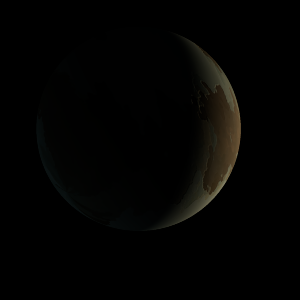|
|
Space Astro
|
Info for exoplanet "Hymarlas"
| Scientific (actual) data |
|---|
| Name | Kepler-250 b |
| Planet status | Confirmed |
| Radius | 0.101 |
| Orbital period | 4.14814 |
| Semi major axis | 0.048 |
| Discovered | 2014 |
| Updated | 2021-02-05 |
| Tconj | 2454970 |
| Impact parameter | 0.75 |
| Publication | Announced on a website |
| Detection type | Primary Transit |
| Alternate names | 2MASS J19182274+4408310 b, K00906.03, KIC 8226994 b, KOI-906 b, KOI-906.03 |
| Star name | Kepler-250 |
| Right ascension | 289.6° |
| Declination | 44.14° |
| Mag j | 14 |
| Mag h | 13.504 |
| Mag k | 13.483 |
| Star distance | 777.31 |
| Star metallicity | 0.063 |
| Star mass | 0.8 |
| Star radius | 0.81 |
| Star temperature | 5160 |
| Star alternate names | 2MASS J19182274+4408310, KIC 8226994, KOI-906 |
| Wikipedia article | Kepler-250 b |
Back
| |
| Fictional info (?) |
|---|
| Suggested name | Hymarlas |
| Planet type | Hot planet |
| Having almost no atmosphere to retain heat, it has surface temperatures that vary diurnally more than on any other planet in its solar system, ranging from 175°K (-98°C) at night to 875°K (602°C) during the day across the equatorial regions.
Its north and south poles, therefore, lie where most other planets have their equators. |
| Atmosphere | Carbonyl sulfide | 99% |
| Hydrogen | 0.011% |
| Nitrogen | 0% |
| Atmospheric pressure | 14 bar |
 |
| No known satellites |
| Google search for Hymarlas |
|
Website by Joachim Michaelis
|
|
|
|